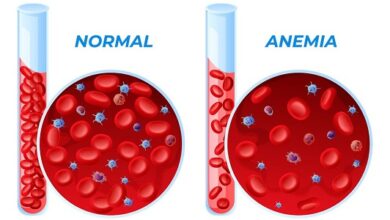Difference between Heartbeat and Pulse Similarities and FAQs
Heartbeat and Pulse
In this article we will provide you the Difference between Heartbeat and Pulse Similarities and FAQs.
What does heartbeat mean?
The word heartbeat refers to the regular, repetitive sound that is generated by the heart. It represents the active function of the heart, since it pumps blood throughout the body. A heartbeat can be heard normally when a stethoscope is placed on a patient’s chest or also during cardiac ultrasounds. The heartbeat , in medical terms, is known as “tachycardia” and its average frequency is between 60-90 times per minute. In addition, there are external factors that influence the speed of the heartbeat: stress situations, intense physical activity and even medications can temporarily alter it.
What does pulse mean
Pulse is the name used to refer to the sensation of heartbeat or vibration that we feel in pulsating blood vessels, such as arteries. This vibration is generated by the rhythm of blood pumping from the heart to other organs and tissues in the body. Pulse can also be a term used to describe the frequency with which something happens, such as “a movement” or “a social trend.” Therefore, pulse generally refers to two things: the regular rhythm of the heartbeat and some kind of repeated, intermittent activity.
Similarities between heartbeat and pulse
Heartbeat and Pulse are related terms that refer to heart rate. Both are used to refer to the regular rhythm of heart contractions, which is generated by electrical activity in muscle tissues. Both the heartbeat and the pulse generally coincide with a full count of 60-100 beats per minute. In medicine, they can be detected by manual palpitation or electronic monitoring, which makes it possible to identify possible cardiac problems resulting from abnormalities in heart rate. In addition, both are useful for detecting variations in metabolic levels during intensive physical exercises or stressful situations in healthy people.
Differences between heartbeat and pulse
Heartbeat and pulse are terms related to heart rate. The heartbeat is a palpitation produced by the contraction of the heart, which can be felt as a vibration in the chest while you breathe deeply. On the other hand, the pulse is the measurement of the heartbeat through the blood pulsations in the arteries. They are measured by gently pressing a finger on an artery near the surface of the skin. Unlike the heartbeat, the pulse is not directly perceived by palpation; It only provides numerical data to determine if there are any abnormalities in the usual cardiac patterns.
Frequent questions about Heartbeat and Pulse
What is the heartbeat?
The heartbeat is a regular pulsation of blood through the heart. It can be heard with a stethoscope, and its frequency varies depending on the age and health of the patient. The heartbeat is usually measured in beats per minute (BPM) or beats per minute (BPM).
What symptoms does the heartbeat have?
Heartbeat symptoms include a pounding sensation in the chest, throat, or neck. These blows can be mild or stronger and can last from seconds to minutes. Other symptoms include palpitations, headache, fatigue, excessive sweating, and dizziness.
How much is the beat?
The heartbeat is the heart pulse, usually measured in beats per minute.
What is the heartbeat called?
The beat is known as the heart pulse.
What is the definition of pulse?
The pulse is the variation in blood pressure generated by the blood flow in the arteries during each heartbeat. The term refers to a simple, non-invasive measurement that can be performed to detect cardiovascular problems, such as hypertension or stress.
How much is a normal pulse?
A normal pulse rate for an adult is 60 to 100 beats per minute.
What is pulse and how is it measured?
Pulse is the frequency at which the heart beats, and is measured by measuring the number of beats per minute. Normally, a healthy person will have between 60-100 beats per minute. Pulse can be measured using a device called a heart rate monitor or by taking the pulse by hand in the main arteries of the body: neck, wrist, or bend of the elbow.
How is the pulse calculated?
The pulse rate is calculated by measuring the number of times the artery pulses in one minute. This can be done by placing two fingers over the artery, such as the wrist or neck, and counting the beats for 15 seconds. After that, multiply the result by four to get your pulse per minute.




